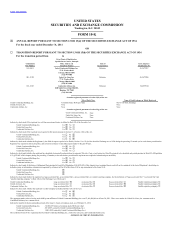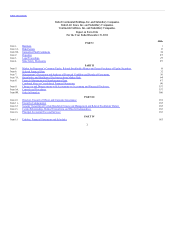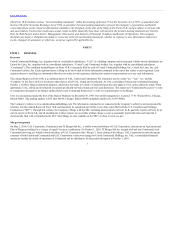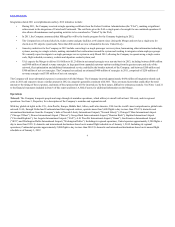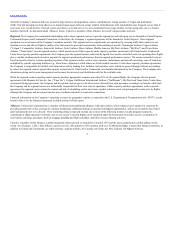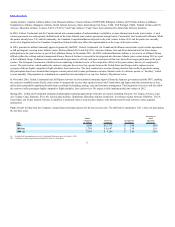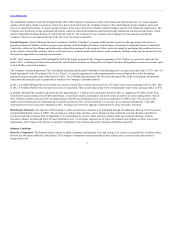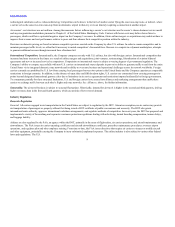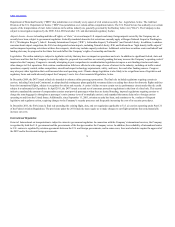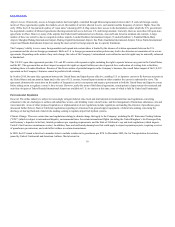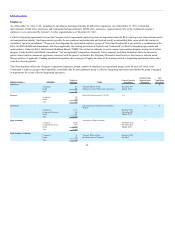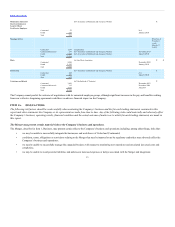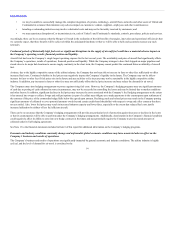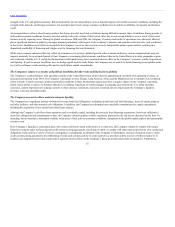United Airlines 2011 Annual Report Download - page 8
Download and view the complete annual report
Please find page 8 of the 2011 United Airlines annual report below. You can navigate through the pages in the report by either clicking on the pages listed below, or by using the keyword search tool below to find specific information within the annual report.
Table of Contents
The availability and price of aircraft fuel significantly affects the Company’s operations, results of operations and financial position. To ensure adequate
supplies of fuel and to obtain a measure of control over prices in the short term, the Company arranges to have fuel shipped on major pipelines and stored
close to its major hub locations. To protect against increases in the prices of fuel, the Company routinely hedges a portion of its future fuel requirements. The
Company uses fixed price swaps, purchased call options, collars or other such commonly used financial hedge instruments based on aircraft fuel or closely
related commodities including heating oil, diesel fuel and crude oil. The Company strives to maintain fuel hedging levels and exposure such that the
Company’s fuel cost is not disproportionate to the fuel costs of its major competitors.
Loyalty Program. United’s Mileage Plus and Continental’s OnePass (“OnePass”) programs build customer loyalty by offering awards and services to
program participants. Members in these programs earn mileage credit for flights on United, United Express, Continental, Continental Express, Continental
Connection, airlines in Star Alliance and certain other airlines that participate in the program. Miles can also be earned by purchasing the goods and services
of our network of non-airline partners, such as credit card issuers, retail merchants, hotels and car rental companies. Mileage credits can be redeemed for free,
discounted or upgraded travel and non-travel awards.
In 2011, the Company announced that MileagePlus will be the loyalty program for the Company beginning in 2012. OnePass is expected to end in the first
quarter 2012, at which point United will automatically enroll OnePass members in MileagePlus and deposit into those MileagePlus accounts award miles equal
to their OnePass award miles balance.
The Company’s loyalty program has The Consolidated Amended and Restated Co-Branded Card Marketing Services Agreement dated June 9, 2011, (the “Co-
Brand Agreement”) with Chase Bank USA, N.A. (“Chase”). Under this agreement, loyalty program members accrue frequent flyer miles for making
purchases using co-branded credit cards issued by Chase. The Co-Brand Agreement provides for joint marketing of the credit card programs and provides
Chase with other benefits such as permission to market to the Company’s customer database.
In 2011, 2.5 million Mileage Plus travel awards were used on United. These awards represented 8.2% of United’s total revenue passenger miles in 2011. Also
in 2011, 1.9 million OnePass travel awards were used on Continental. These awards represented 5.6% of Continental’s total revenue passenger miles in 2011.
In addition, Mileage Plus members redeemed miles for approximately 1.3 million non-United travel awards in 2011 as compared to 975,000 in 2010. Non-
United travel awards include United Club memberships, car and hotel awards, merchandise and travel solely on another air carrier, among others. Also in
2011, OnePass members redeemed miles for approximately 489,000 non-Continental travel awards as compared to 381,000 in 2010. The increase in the
number of non-United and non-Continental travel awards redeemed in 2011 was due primarily to an increase in car and hotel redemptions. Total miles
redeemed for travel on United and Continental in 2011, including class-of-service upgrades, represented 83% of the total miles redeemed.
Distribution Channels. The majority of the Company’s airline seat inventory continues to be distributed through the traditional channels of travel agencies
and global distribution systems (“GDS”). The growing use of direct sales websites, such as united.com and continental.com and alternative distribution
systems provides the Company with an opportunity to de-commoditize its services, better control its content, make more targeted offerings, retain its
customers, enhance its brand and lower its ticket distribution costs. To encourage customer use of lower-cost channels and capitalize on these cost-saving
opportunities, the Company will continue to expand the capabilities of its websites and explore alternative distribution channels.
Domestic Competition. The domestic airline industry is highly competitive and dynamic. New and existing U.S. carriers are generally free to initiate service
between any two points within the United States. The Company’s competitors consist primarily of other airlines and, to a lesser extent, other forms of
transportation and
7

